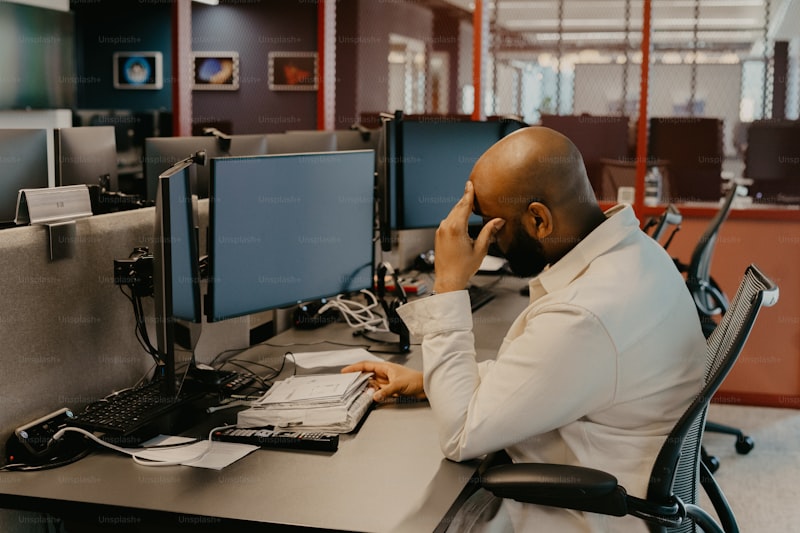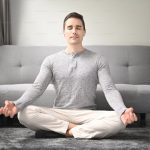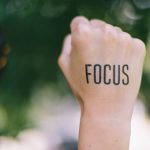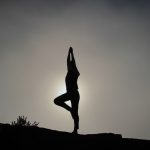Ever heard the expression feel the fear and do it anyway? Whether it’s a fear of a particular yoga posture or a fear of death itself, overcoming your greatest fears is an important part of your yoga journey.
As a species we’re naturally adverse to things we think will hurt us. We want to keep those around us safe from harm and avoid pain ourselves, and our minds cater to that by using fear. The death of a loved one, or even ourselves, is a fear that most of us have in common, and while it’s a scary thought, it gives us the humbling reminder that we’re not really all that in control.
In yoga philosophy, this is called abhiniveśa, and it’s the last of the kleśhas, or obstacles, which get in the way of our yoga journey. Although we may not be in control of our lives, the emotion of fear is within our control. We just need to understand the fears that hold us back so we can overcome them.
Origins Of Fear
Apart from death, what else are you scared of? For me, there are certain yoga postures which I find pretty scary, although it often takes me a while to realise it’s fear I’m experiencing. Fear often comes disguised as irritation, frustration or annoyance, but ultimately it’s the fear of losing control, of moving in a completely different way, which make me shun certain types of āsana.
It’s not just the physical side of yoga we often avoid, but the practice of being still in meditation. Too often we’re so busy being busy, that we forget how to just sit and be still, without checking our phones or flicking on the TV to distract ourselves. When in a yoga class, being asked to rest in Śavāsana is just as likely to have people walking out of the room as being asked to try Scorpion Pose.
The problem with fear is that is stops us progressing. We become more and more controlling as we desperately try to make our worlds feel safe and easeful. This desire to control makes us feel rigid, tense and agitated. As Pattbhi Jois once said:
“Body is not stiff. Mind is stiff.”
Repetition, Repetition, Repetition…
It’s one thing to be fearful of tackling a yoga posture, but quite another to face the greater fears in our lives. However, by overcoming some of our smallest fears, we develop greater courage to manage our greatest fears. We may not easily shed ourselves fears we’ve held our whole lives, but we can make sure that these fears don’t get in the way of us living. Yoga is one way to do this.
Yoga has this funny little way of re-patterning the body and creating new pathways in our brains. We are literally changing the way we think with every yoga practice we do. This is why a daily practice is important. If you spend every day sitting in a chair, your body is going to ache. If you spend every day putting yourself down, you’re going to believe you’re not good enough. Put simply, whatever we are doing regularly — be it practicing yoga, smoking cigarettes, watching the news every day — will impact our thoughts, and impact our futures.
Part of changing our daily habits means reflecting honestly about how we have experienced life so far. If we feel fearful about our safety and security in life, it isn’t because we’re not a strong person, but that we have probably experienced situations which have led us to feel fearful. Part of our yoga practice helps us to understand why we act the way we do, and to help us decide whether we need to change the way we live in order to become happier. Tackling that handstand might not seem so impossible anymore. It might not seem much at first, but it is really these small victories which help us move forward in life.
“God, grant me the serenity to accept the things I cannot change, the courage to change the things I can, and the wisdom to know the difference.”
The Serenity Prayer
Face Your Fears
The more we practice yoga, the greater a sense of connection we feel. We become more conscious, more awake, and through this awakening we can begin to understand and overcome our fears a little more. Check out these three simple tips below and discover how to live more fully, without fear.
1. Meditate More
Meditation is a really important part of this practice. Allowing ourselves to sit quietly begins to clear the mist in front of our eyes. Even if you try just spend a few minutes on the tube or bus being really mindful and aware of how you’re feeling right now (without any judgement), this daily action can start to make a difference in your overall view on life
2. Be Positive
I don’t mean being overly enthusiastic about how nice your green smoothie is (although this one is pretty delicious…). I’m talking more about making your thoughts and attitudes to life more positive. Part of this process is about learning to accept what is, and be grateful for it. Life is short, so why not make today the best day it can be?
3. Face It Head On
Have you been sneaking off to the toilet every time your teacher announces that the next posture is headstand? Try facing up to it next time in class. You can always pull your teacher to one side, explain your feelings and ask for support. You might not manage the pose that time round, but give it a couple of attempts and I bet you’ll be surprised at what you can do.
I recently attended training with the incredibly inspiring Matthew Sanford, and he said: “We make ourselves smaller because we are scared of how big we can be.” Don’t let fear hold you back from your true potential.













